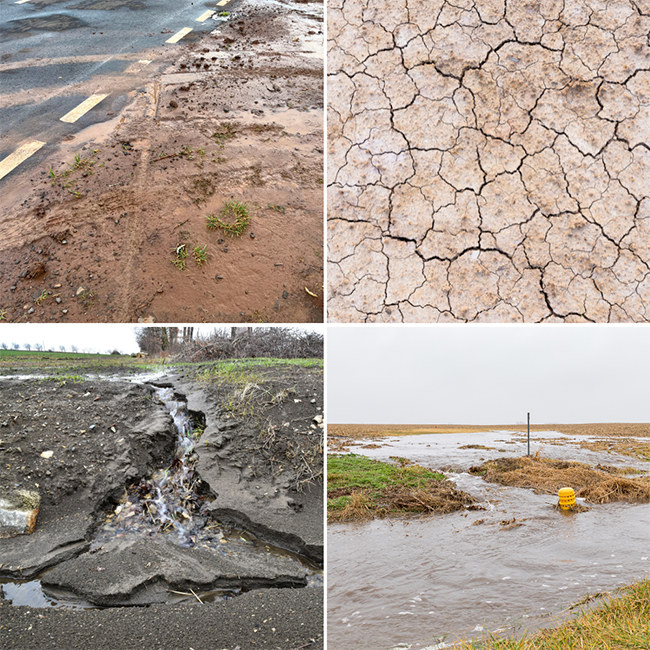Types of Erosion
Table of Contents

The following types of soil erosion are of greatest concern for roadside managers.
Occurring on Slopes
Splash Erosion
Raindrops dislodge exposed soil particles, causing erosion. These particles settle in soil pores and, when dry, form a crust, reducing infiltration during subsequent rains.
Sheet Erosion
This type of erosion occurs in heavier rains on uniformly smooth soil surfaces. The raindrops carry soil particles away in a shallow sheet of water.
Rill Erosion
Slight differences in soil surface elevation cause runoff to concentrate and form a pattern of cuts or rills. This type of erosion is more likely to occur than sheet erosion since slopes are rarely uniformly smooth.
Occurring in Concentrated Flow Areas
Channel Erosion
This type of erosion is due to the force of flowing water. Many, if not all, roadsides are conduits for this kind of concentrated stress on the soil.


